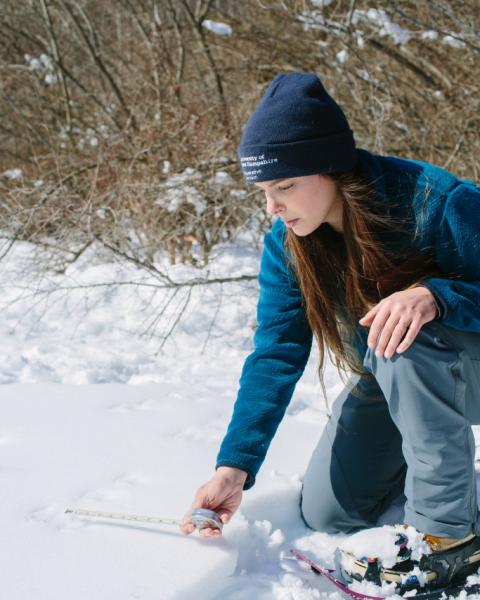Pollinators are species that move pollen from one flower to another, fertilizing plants and allowing them to reproduce. While some birds and bats are pollinators, insects – bees, butterflies, moths, flies, wasps, and beetles – are responsible for most pollination that affects our daily lives. Bees intentionally collect pollen as food for their offspring. Other species — such as butterflies, moths, and flies — inadvertently move pollen from plant to plant when it sticks to their bodies as they are feeding on nectar.
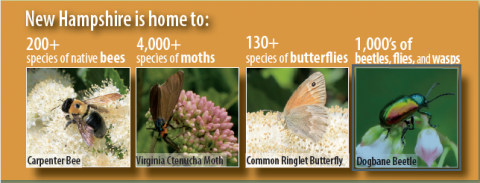
Over 75% of all flowering plants rely on animal-assisted pollination to reproduce, making pollinators essential to our environment and to healthy ecosystems. They’re also important to our economy and diets – one out of every three bites of food we eat exists because of pollinators.
All insect pollinators have similar life cycles made up of four stages: egg, larva (e.g., caterpillars), pupa (e.g., a chrysalis for butterflies or a cocoon for bees and moths), and adult. Most adults of these species only live a few days to several weeks, unless they overwinter as an adult.

Adult butterflies and moths lay eggs on or near the preferred food source for the larval stage. The caterpillar stage feeds on this host plant(s) before forming a pupa and becoming an adult.
Bees lay eggs in a hidden nest where they grow through the egg, larval, and pupal stages. Like the non-native honey bees many of us are familiar with, our native bumble bees are social, living in colonies from early spring to late fall.
However, most of our native bee species lead solitary – rather than social – lives.
What do Pollinators Need?
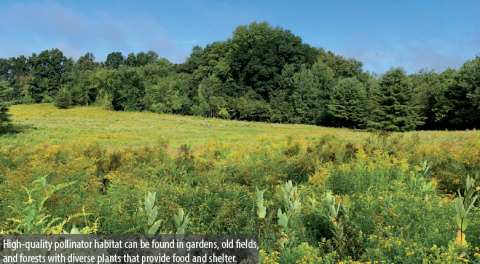
While each pollinator has specific needs to support each stage of their lifecycle, they all need high-quality habitat that provides an abundance of flowering plants, nesting sites, and shelter. These resources can be found in gardens,
meadows and old fields, unmowed forest edges, hedge rows, and woodlands.
A Diversity of Plants
Pollinators require a diversity of plants to provide food and shelter during their various life stages. Most bees utilize the nectar and pollen from many plants but may only forage on one species during a particular feeding, which is critical to successful pollination. Pollinators may travel only a couple hundred feet up to a mile to forage for pollen and nectar.
Nesting and Egg-Laying Sites
Protecting or providing nest sites is essential for pollinators to complete their life cycle. Bees create nests in abandoned beetle burrows, tunnels in dead or dying trees and logs, hollowed centers of stems and twigs, rock crevices, or tunnels in soil. Some bumble bees nest on the soil surface beneath the thatch layer. For butterflies and moths, egg-laying requires grasses, flowers, shrubs, or trees that act as host plants.
Shelter and Overwintering Areas
Pollinators need protection from severe weather and predators, as well as sites for roosting (resting). Some overwinter as adults, while others spend winter in earlier life stages. Shelter and overwintering areas can include various layers of vegetation, leaf litter, dead and dying trees, rock crevices or tunnels in wood, plant stems, or underground.
Monarch Migration
Unlike other butterflies that can overwinter locally, monarchs cannot survive cold winters and migrate up to 3,000 miles to Mexico, where overwintering habitat in the form of high-elevation fir forests is crucial to their survival. It’s also important that they have access to nectar resources and roosting sites – often fir, pine, and cedar trees – along the entirety of their migratory route.
Threats to Pollinators
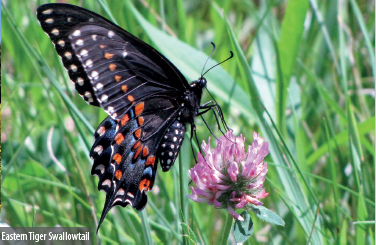
Habitat Loss and Fragmentation. Development and agriculture can result in habitat loss and fragmentation, making it difficult for pollinators to find the food and nesting sites necessary for their survival. While it’s possible for urban, suburban, and agricultural areas to support flowering plants and benefit some pollinators, the loss of specific host plants can have significant impacts on many species.
Pesticides. The use of pesticides can have negative impacts on pollinators and their habitat. Herbicides can remove important forage plants or nesting habitat, while insecticides and fungicides can kill individual insects. Some types
of insecticides (systemics) are taken up by plants and remain in the pollen and nectar, where they are consumed by pollinators.
Introduced Species. Non-native plants or animals can increase competition for resources amongst pollinators and the native plants that make up their habitat. Commercial bumble bees and honey bees can introduce pathogens to wild bees. While some non-native plants can provide pollen used by insects, exotic and invasive plants can compete for space, crowding out important native host plants.
Climate Change. A changing climate will likely disrupt the relationship between pollinators and plants. As the timing and location of flowering plants shift in response to warming temperatures and other changes, they may become out of sync with insects that depend on them or assist with their pollination. Increases in both drought and rain events and changes in overwintering conditions might also reduce pollinator survival.
As a result of these threats, there have been significant declines in insects worldwide. Some are well documented – the monarch butterfly and approximately one-quarter of bumble bees in the United States are in decline. There are likely many more species in trouble, but information is lacking for most insects.
How You Can Help
Protect existing pollinator habitat. Assess the nectar resources being offered in your backyard, field, or forest edge. Observe which areas are used by bees, butterflies, and other pollinators, and protect those areas.
Pick the right plants. Grow flowers that will provide the nectar and pollen resources that pollinators feed on. Providing a diversity of flowers, shrubs, and trees that bloom from early spring to late fall will help support a diversity of pollinators. Use native plants when possible.
Provide access to nesting sites and shelter. Quality habitat provides resources for the entire life cycle of pollinators, including eggs and larvae. For butterflies and moths, you can plant caterpillar host plants (e.g., milkweed for monarchs). For bees, you can leave patches of bare ground, provide brush piles, or provide a nesting block (“bee-hotel”). Don’t worry about tidying your garden in the fall – leaf litter and hollow stems are valuable overwintering habitat. Leave dead trees and logs – they provide valuable sites for nesting and overwintering.

Reduce mowing. Mowing portions of your lawn, field, or grassland once per year in the dormant season, or even mowing some areas once every few years, can reduce the impact on pollinators and improve habitat. Mowing
your yard less frequently – every few weeks – and leaving grass at a minimum height of around 4 inches can improve habitat for bees and other insects.
Avoid or limit pesticide use. Avoiding the use of pesticides eliminates potential negative impacts to pollinators and their habitats. Use pesticides only when needed, avoid areas where native pollinators live such as hedge rows and natural areas, and follow label directions. Maintain no-spray buffer areas between sprayed areas (crops) and pollinator habitat. When purchasing plants or seeds, check to make sure they weren’t pre-treated with pesticides.

Additional Information
For more information on pollinators in New Hampshire, visit the New Hampshire Fish & Game Department Website at: wildnh.com/nongame/pollinators.html.
To learn about pollinator conservation efforts, including plants that benefit pollinators, visit:
xerces.org/pollinator-conservation.
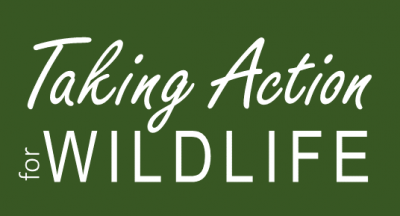
We bring information about NH’s wildlife to you! The Taking Action for Wildlife Team, made up of staff from NH Fish & Game, UNH Cooperative Extension, and NH Association of Conservation Commissions, works to help towns, land trusts, natural resource professionals, and private landowners conserve wildlife and habitats in New Hampshire. We put information from NH’s Wildlife Action Plan in the hands of New Hampshire citizens.
For more information about habitat management, resources and publications about other wildlife, and to learn more about the New Hampshire Wildlife Action Plan visit: www.takingactionforwildlife.org.
Download Resource for printable version
-----------------------------------------------------------------------------
This webpage and accompanying Focus on Wildlife brochure was developed by UNH Cooperative Extension and NH Fish & Game. Written by Haley Andreozzi and Heidi Holman. June 2020.
Photo Credits: Photo Credits: Robert Durant, NH Fish & Game Department, Lorie Shaull, US Fish & Wildlife Service, Rick Van de Poll, Emma Tutein. Front Cover: Tri-colored Bumble Bee by Robert Durant.
